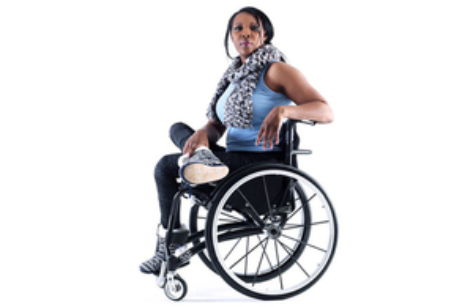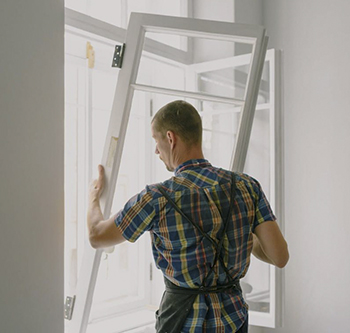Changing places toilets
On 24 December 2018 the Ministry of Housing, Communities & Local Government announced proposals to make Changing Places for severely disabled people mandatory in new large public buildings.
Changing Places toilets are larger than standard disabled toilets and have extra equipment like adult-sized changing benches, hoists, peninsular WCs (further removed from the wall and with space at the sides) and showers. People with disabilities and their carers say Changing Places in public can be life changing and allow them to go out in the public without fear or stress.
Currently, the building regulations only recommend Changing Places toilets are provided, and there are only 30 to 40 Changing Places on the entire NHS England estate. But Care Minister Caroline Dinenage confirmed that more that 100 NHS hospitals will build Changing Places facilities backed by a £2 million fund and that new shopping centres, stadiums and theme parks are among buildings that could be required to provide Changing Places toilets.
Ministers will launch a consultation in 2019 on proposals that facilities are included in all new large publicly-accessible buildings and other significant redevelopments in England.
The government has also provided £70,000 for an online map of the UK that helps carers and disabled people find Changing Places toilets.
Local Government Minister Rishi Sunak MP said; “Changing Places toilets make a huge difference to the lives of severely disabled people. I want to see these facilities included as standard in new large buildings like shopping centres and cinemas, so more disabled people can be assured peace of mind and dignity when they are away from home. The government will consult in the New Year on how best to do this, including changing building regulations if required, if it means more disabled people can get access the essential services they deserve.”
Caroline Dinenage said; “It is utterly shocking how few Changing Places toilets there are currently in NHS hospitals and other public spaces. People with disabilities and their carers rightly expect to find suitable facilities in a hospital of all places. A quarter of a million disabled people need Changing Places and this investment will mean many more of them can access a toilet safely and comfortably.”
Catherine Woodhead, Chief Executive of Muscular Dystrophy UK, which co-chairs the Changing Places Consortium, said; “We, along with our wonderful campaigners, have long pushed for changes to legislation to make Changing Places toilets mandatory in new large public buildings and it’s fantastic that we are now one step closer to that reality.”
The cost of installing a changing places facility in a hospital is usually between £27,000 and £35,000. The £2 million will be allocated on the principles of matched funding, with Trusts contributing to the cost.
On 12 May 2019 the government opened a consultation into the proposals. The 10-week consultation closes on 21 July. Ref https://www.gov.uk/government/news/new-public-buildings-to-have-changing-places-toilets-for-severely-disabled-people
In July 2020, The government announced the compulsory inclusion of changing places toilets in new public buildings. Places of assembly, recreation and entertainment with a capacity for 350 or more people will be required to install the facilities if they are newly built or have a major refurbishment. The government estimates this will add the toilets to more than 150 new buildings a year. In addition, a £30 million fund will be available to install changing places toilets in existing buildings. Ref https://www.gov.uk/government/news/changing-places-toilets-for-severely-disabled-people-to-be-compulsory-in-new-public-buildings
See also the announcement of funding on 4 March 2021. https://www.gov.uk/government/news/30-million-investment-to-provide-changing-places-toilets
[edit] Related articles on Designing Buildings Wiki
- Accessibility in the built environment.
- Approved Document G.
- Approved Document H.
- Approved Document M.
- Bathroom definition.
- Changing lifestyles.
- Equality Act.
- Inclusive design.
- Lifetime Homes Design Guide (EP 100).
- Lifetime homes.
- People with disabilities.
- Installed level access shower.
- Sanitaryware.
- Sanitary accommodation.
- Water closet.
- Wet room.
Featured articles and news
Licensing construction in the UK
As the latest report and proposal to licence builders reaches Parliament.
Building Safety Alliance golden thread guidance
Extensive excel checklist of information with guidance document freely accessible.
Fair Payment Code and other payment initiatives
For fair and late payments, need to work together to add value.
Pre-planning delivery programmes and delay penalties
Proposed for housebuilders in government reform: Speeding Up Build Out.
High street health: converting a building for healthcare uses
The benefits of health centres acting as new anchor sites in the high street.
The Remarkable Pinwill Sisters: from ‘lady woodcarvers’ to professionals. Book review.
Skills gap and investment returns on apprenticeships
ECA welcomes new reports from JTL Training and The Electrotechnical Skills Partnership.
Committee report criticises UK retrofit schemes
CIOB responds to UK’s Energy Security and Net Zero Committee report.
Design and construction industry podcasts
Professional development, practice, the pandemic, platforms and podcasts. Have we missed anything?
C20 Society; Buildings at Risk List 2025
10 more buildings published with updates on the past decade of buildings featured.
Boiler Upgrade Scheme and certifications consultation
Summary of government consultation, closing 11 June 2025.
Deputy editor of AT, Tim Fraser, discusses the newly formed society with its current chair, Chris Halligan MCIAT.
Barratt Lo-E passivhaus standard homes planned enmasse
With an initial 728 Lo-E homes across two sites and many more planned for the future.
Government urged to uphold Warm Homes commitment
ECA and industry bodies write to Government concerning its 13.2 billion Warm Homes manifesto commitment.
From project managers to rising stars, sustainability pioneers and more.
Places of Worship in Britain and Ireland, 1929-1990. Book review.























